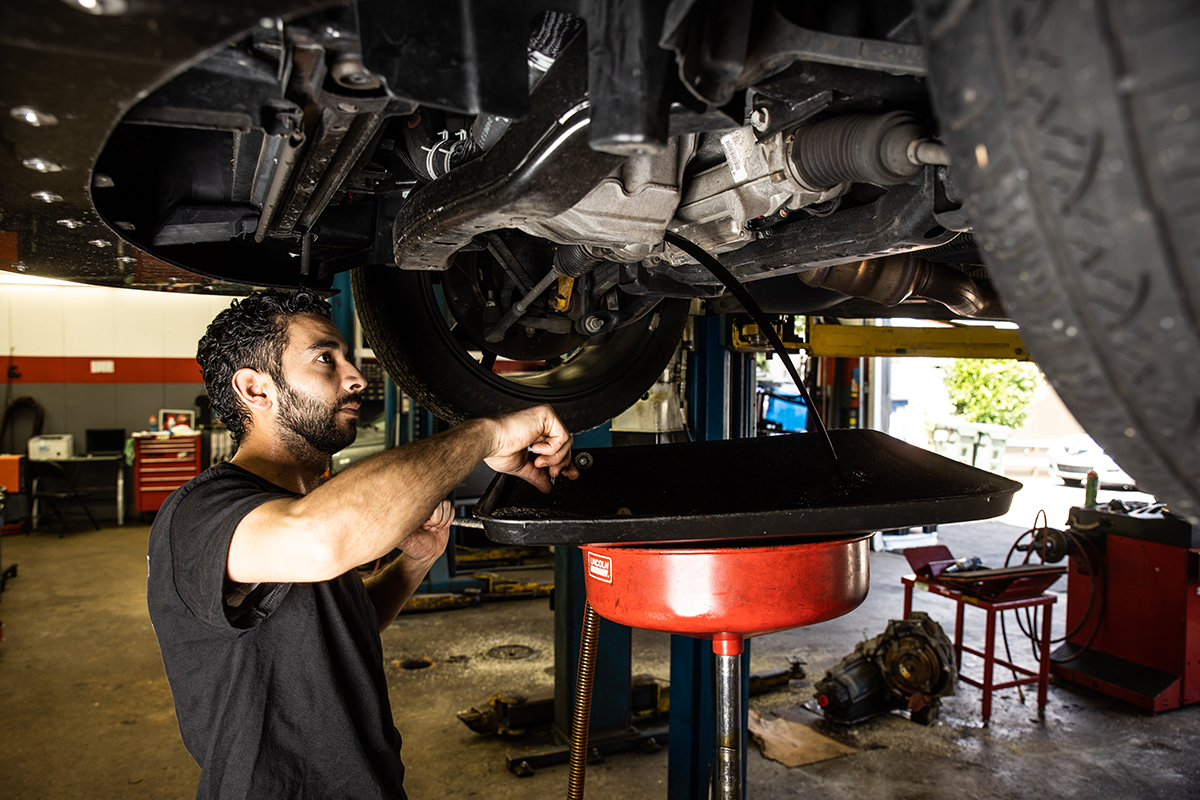The Comprehensive Guide to Oil Changes

Regular oil changes are one of the most fundamental yet essential aspects of vehicle maintenance. This routine service, often overlooked by many car owners, plays a critical role in ensuring the longevity and performance of your vehicle. While it may seem like a minor task, the implications of neglecting oil changes can be severe, leading to costly repairs and potential engine failure. This guide will delve into everything you need to know about oil changes, from the importance of fresh oil to understanding the different types of oil available, and the steps involved in the process.
Why Oil Changes Are Essential
Understanding the importance of this routine vehicle maintenance task will help keep your car running smoothly for years to come.
Lubrication of Engine Parts
The primary function of engine oil is to lubricate the moving parts of the engine, such as the pistons, crankshaft, and camshaft. These components are in constant motion, and without adequate lubrication, they can create friction, leading to overheating and wear. Over time, engine oil breaks down and loses its lubricating properties, making it essential to replace the old oil with fresh oil to maintain the engine's efficiency.
Cooling the Engine
In addition to lubrication, engine oil helps to cool the engine. As it circulates through the engine, oil absorbs and dissipates heat generated by the engine's moving parts. Without regular oil changes, the oil can become contaminated with dirt, debris, and sludge, reducing its ability to cool the engine effectively. This can result in the engine overheating, which can cause significant damage.
Cleaning the Engine
Engine oil also acts as a cleaning agent, helping to remove contaminants and particles that accumulate within the engine. Over time, these contaminants can form sludge, which can clog engine parts and reduce performance. By changing the oil regularly, you ensure that the engine remains clean and free of debris, allowing it to run smoothly and efficiently.
Preventing Engine Wear
One of the most critical reasons for regular oil changes is to prevent engine wear. As oil ages, it loses its viscosity and can no longer protect the engine's components effectively. This can lead to increased friction and, eventually, engine wear. Regular oil changes help maintain the oil's protective properties, reducing the risk of engine wear and prolonging the life of your vehicle.
How Often Should You Change Your Oil?
The frequency of oil changes depends on several factors, including the type of vehicle, driving conditions, and the type of oil used. Traditionally, the rule of thumb was to change the oil every 3,000 miles or three months, whichever came first. However, advances in engine technology and oil formulations have extended the recommended oil change intervals. What factors influence how often you should change your oil?
Manufacturer's Recommendations
The best source of information for oil change intervals is your vehicle's owner's manual. Manufacturers provide specific guidelines based on the design of the engine and the type of oil used. In many cases, modern vehicles can go 5,000 to 7,500 miles between oil changes, and some vehicles with synthetic oil can even go up to 10,000 or 15,000 miles.
Driving Conditions
Your driving habits and conditions can also affect how often you should change your oil. For example:
- Frequent Short Trips | If you frequently drive short distances, your engine may not reach its optimal operating temperature, leading to moisture buildup and oil contamination. In this case, more frequent oil changes may be necessary.
- Stop-and-Go Traffic | Driving in heavy traffic can cause your engine to work harder and generate more heat, which can accelerate oil breakdown.
- Towing or Carrying Heavy Loads | If you use your vehicle for towing or carrying heavy loads, the engine will experience increased stress, which can shorten the oil's lifespan.
Type of Oil Used
The type of oil you use also plays a role in determining oil change intervals:
- Conventional Oil: Typically, conventional oil needs to be changed every 3,000 to 5,000 miles.
- Synthetic Blend Oil: This type of oil offers better protection and can last longer than conventional oil, often up to 7,500 miles.
- Full Synthetic Oil: Full synthetic oil provides the best protection and can last up to 10,000 to 15,000 miles between changes.

Image: An automotive technician pours new oil into a vehicle during a complete oil change service at Metro Motor.
Choosing the Right Oil for Your Car
Selecting the appropriate oil for your vehicle is crucial for maintaining engine health. There are several factors to consider when choosing the right oil:
1. Viscosity
Viscosity refers to the thickness of the oil and its ability to flow at different temperatures. Oil viscosity is indicated by a number and letter combination, such as 5W-30. The first number (5W) represents the oil's viscosity at cold temperatures, while the second number (30) represents its viscosity at high temperatures. It's essential to use the viscosity recommended by your vehicle's manufacturer, as using the wrong viscosity can affect engine performance and fuel efficiency.
2. Oil Type
As mentioned earlier, there are different types of oil available:
- Conventional Oil
This is the most basic type of oil, derived from crude oil. It is suitable for older vehicles and those with low mileage. - Synthetic Blend Oil
This oil combines conventional and synthetic oil, offering better protection and performance than conventional oil alone. - Full Synthetic Oil
Full synthetic oil is engineered to provide superior protection, especially in extreme temperatures and high-stress conditions. It is ideal for high-performance vehicles and those that require longer oil change intervals. - High-Mileage Oil
Designed for vehicles with over 75,000 miles, high-mileage oil contains additives that help reduce oil consumption, minimize leaks, and protect aging engine components.
3. Additives
Engine oils contain various additives that enhance their performance. Some common additives include:
- Detergents: Help keep the engine clean by preventing the formation of deposits and sludge.
- Anti-Wear Agents: Protect engine parts from wear by forming a protective layer on metal surfaces.
- Viscosity Improvers: Help maintain the oil's viscosity across a wide temperature range.
- Rust and Corrosion Inhibitors: Protect the engine from rust and corrosion caused by moisture and acids.
The Oil Change Process: Step-by-Step
While getting an oil change at a service center is convenient, understanding the process can be helpful, especially if you choose to do it yourself. Here's a step-by-step guide to performing an oil change (although we recommend trusting the certified automotive technicians at Metro Motor to complete the service for you).
1. Gather the Necessary Tools and Materials
Before you begin, ensure you have the following:
- New oil (the correct type and amount for your vehicle)
- New oil filter
- Oil filter wrench
- Socket wrench set
- Drain pan
- Funnel
- Clean rags or paper towels
- Car jack and jack stands (if needed)
- Rubber gloves
2. Prepare Your Vehicle
Park your vehicle on a flat, level surface and engage the parking brake. If your vehicle has low ground clearance, use a car jack to raise it and place jack stands underneath for safety.
3. Drain the Old Oil
Locate the oil drain plug underneath the engine. Place the drain pan underneath the plug. Use a socket wrench to loosen and remove the drain plug, allowing the old oil to drain into the pan. Once the oil has drained completely, replace the drain plug and tighten it securely.
4. Replace the Oil Filter
Locate the oil filter, which is usually near the bottom or side of the engine. Use an oil filter wrench to remove the old filter. Be careful, as some oil may spill out. Apply a thin layer of new oil to the rubber gasket on the new oil filter. Screw the new filter into place by hand, tightening it securely but not over-tightening.
5. Add New Oil
Locate the oil filler cap on top of the engine and remove it. Place a funnel in the filler hole and pour the new oil into the engine, being careful not to overfill. Check the oil level using the dipstick, and add more oil if necessary. Replace the oil filler cap and tighten it securely.
6. Check for Leaks
Start the engine and let it run for a few minutes. Check under the vehicle for any leaks around the drain plug and oil filter. If there are no leaks, turn off the engine and allow it to sit for a few minutes before rechecking the oil level.
7. Dispose of the Old Oil Properly
Pour the old oil into a sealed container and take it to a recycling center or an auto parts store that accepts used oil. Never dispose of oil by pouring it down the drain or on the ground.
Signs Your Car Needs an Oil Change
While following a regular oil change schedule is essential, it's also important to be aware of the signs that your car may need an oil change sooner than expected. Here are some common indicators:
- Dashboard Warning Light
Most modern vehicles are equipped with an oil change reminder light that will illuminate when it's time to change the oil. Additionally, the oil pressure warning light may come on if the oil level is too low or if the oil pressure is insufficient. - Dark, Dirty Oil
Fresh oil is typically amber in color and transparent. Over time, it becomes darker and dirtier as it collects contaminants. If you notice that the oil on the dipstick is dark and dirty, it's time for a change. - Engine Noise
Oil provides a protective barrier between engine parts, reducing friction and noise. If you hear unusual engine noises, such as knocking or ticking, it may indicate that the oil is no longer providing adequate lubrication, and an oil change is needed. - Exhaust Smoke
While some vapor from the exhaust is normal, excessive smoke or a bluish tint may indicate that the engine is burning oil. This can be a sign of an oil leak or other engine issues, and an oil change should be performed to address the problem. - Oil Smell Inside the Vehicle
If you smell oil inside your car, it could indicate a leak or that the oil is burning. This is a serious issue that requires immediate attention, and an oil change may be necessary to prevent further damage.
Turn to Metro Motor for Convenient Oil Changes in D.C., Maryland, and Northern Virginia
Regular oil changes are a crucial part of vehicle maintenance that should never be overlooked. By keeping up with oil changes, you ensure that your engine remains lubricated, clean, and cool, which in turn extends the life of your vehicle and helps avoid costly repairs. Whether you choose to perform oil changes yourself or rely on a professional service center, understanding the importance of this routine maintenance task will help keep your car running smoothly for years to come.
If you'd like to take the hassle out of changing the oil in your car, van, truck, or SUV, then roll into Metro Motor! Our team of ASE-certified auto repair and maintenance technicians can complete the entire oil change process for you at one of our convenient service centers located throughout the DMV. Make an appointment to have your oil changed today!
Vehicle care information made available by Metro Motor is presented as helpful advice for general maintenance and should not be construed as instructions for at-home vehicle service. Be sure to consult your owner’s manual and a licensed, professional mechanic for diagnostics and repair.
